Moving to Barcelona, Spain
Welcome to Barcelona: where Modernisme architecture meets big tech, every day of the week!
Barcelona is a city where Mediterranean sunshine, city beaches, and Modernisme architecture live side by side with a fast-growing tech scene. The capital of Catalonia has just over 1.73 million residents in the city proper and more than 5 million across the wider metro, which gives it big-city energy without losing its neighborhood vibe. The population is famously international, and daily life flows in both Catalan and Spanish, which makes settling in easier for newcomers who arrive with either language or start learning on arrival.
Quality of life is a major draw. In InterNations’ latest Expat City Ranking, Barcelona places 21st worldwide overall and 12th for quality of life, scoring especially well for culture and nightlife, dining, public transport affordability, and the ease of weekend getaways. In short, you can close your laptop and be at the beach, a Gaudí landmark, or a mountain trail in minutes.
For travelers and remote teams, the city is exceptionally connected. Barcelona–El Prat Airport handled about 55 million passengers in 2024, serving more than 350 routes with roughly 73 percent international traffic, and the metro, tram, and suburban rail form an easy-to-use network across the metro area.
Tech professionals will find a mature ecosystem and real momentum. Barcelona hosts MWC Barcelona, the world’s flagship connectivity event that anchors the city on the global tech calendar each year. On the ground, the region counted 160 international technology hubs in 2024, and the city’s pool of digital professionals grew to around 129,600 in 2024, continuing a steady multi-year climb. Spaces like Tech Barcelona’s Pier01 cluster startups, investors, and corporates in 11,000 square meters by the sea, while the Barcelona Supercomputing Center runs MareNostrum 5, one of Europe’s most powerful systems, which strengthens local AI, climate, and biotech research and helps attract deep-tech talent.
The broader Spanish startup scene has passed the €100 billion mark in combined enterprise value, and Barcelona consistently ranks among the country’s top hubs for funding, headcount, and international founder interest. That means a healthy mix of product companies, scaleups, and global tech hubs hiring in software engineering, data, security, product, and design, with plenty of meetups and conferences to plug into from week one.
Lifestyle and Culture
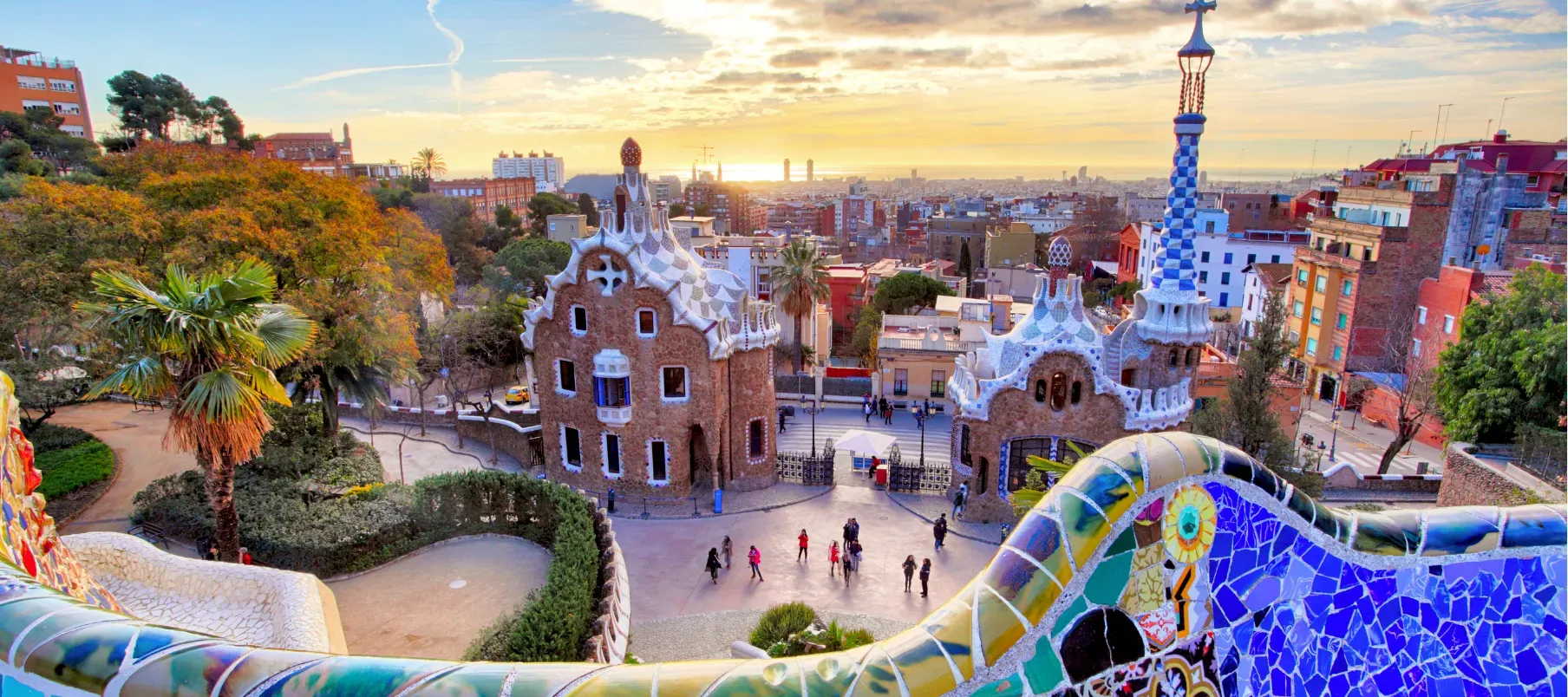
City lifestyle
Barcelona runs on Mediterranean time. Mornings start a touch later than in northern Europe, lunches linger, and dinners often begin around 9 to 10 pm. Plan team dinners and social meetups accordingly, since many restaurants hit their stride late into the evening. Lonely Planet
Day to day, the city feels made for walking and biking. Barcelona’s expanding Superblock program calms through-traffic so streets double as social spaces where kids play and cafés spill onto sidewalks. If you value a quiet, green commute between home and office, this policy is your friend.
Nature is close enough to build into your routine. Beaches line the city from Barceloneta to Mar Bella, with lifeguards in season, accessible bathing programs, and plenty of room for a sunrise run or a laptop-in-a-beach-bar moment if you are remote. For weekend resets, the 8,000-hectare Collserola Natural Park rises just behind the city for hiking and cycling with skyline views.
Tips for tech folk and the simply curious
- If you work with teams outside Europe, lean into the city’s later rhythm by scheduling deep focus in the morning and calls after 4 pm.
- Join meetups around the waterfront and in the Sant Martí district to plug into the startup scene, then reward yourself with a sunset swim.
Cultural highlights and attractions
Barcelona’s icons are more than postcards, they are your new backyard. Gaudí’s Sagrada Família is still under construction and drew about 4.7 million visitors in 2023, so book timed tickets and consider early slots to beat crowds.
Art lovers can trace Picasso’s formative years at the Museu Picasso, then pivot to contemporary art at MACBA or Catalan masters at MNAC on Montjuïc. The Picasso museum’s official site lists current exhibitions and evening openings that pair nicely with tapas after.
Festivals set the city’s calendar. La Mercè in September fills plazas with concerts, light shows, and the breathtaking castellers human towers that are a proud Catalan tradition. In spring, Sant Jordi turns the streets into a bloom of roses and bookstalls, a perfect day to gift a novel to a teammate or neighbor. Early summer brings Sant Joan, a night of fireworks and beach gatherings that mark the start of the hot season.
Quick culture cues
- Catalan and Spanish are both used. A simple “bon dia” or “gràcies” earns smiles.
- Dinner is late, but coffee is an all-day ritual, which makes it easy to meet founders or friends between meetings.
Popular neighborhoods
Poblenou and the 22@ district, Sant Martí
Once industrial, now creative and techie, Poblenou blends refurbished factories with glassy offices and co-working spaces. The city’s 22@ plan transformed 200 hectares into a mixed-use innovation hub, and you are a short stroll from Bogatell and Mar Bella beaches for pre-work swims and lunchtime volleyball. Expect lofts, new-build apartments, cafés with Wi-Fi, and bike lanes in every direction.
Eixample
The heart of modern Barcelona, Eixample is the famous grid designed by Ildefons Cerdà, dotted with Gaudí landmarks, boutiques, and buzzy restaurants. It is a central, well-connected base for cross-town commutes, with stately flats in classic buildings and plenty of nightlife on your doorstep.
Gràcia
Formerly a village, Gràcia keeps its independent spirit with pedestrian lanes, shady squares, and a strong community feel. Many creatives and young families settle here for the small-scale vibe, while Park Güell and lively plazas add weekend color. Housing skews to older walk-up buildings with character and shared rooftops.
Sarrià–Sant Gervasi
Leafy, residential, and calm, this is a favorite for families who want space, good schools, and quick access to Collserola trails. Think larger apartments, townhouses, and a quieter evening scene, with fast links down Diagonal to offices and meetups.
Cost of Living
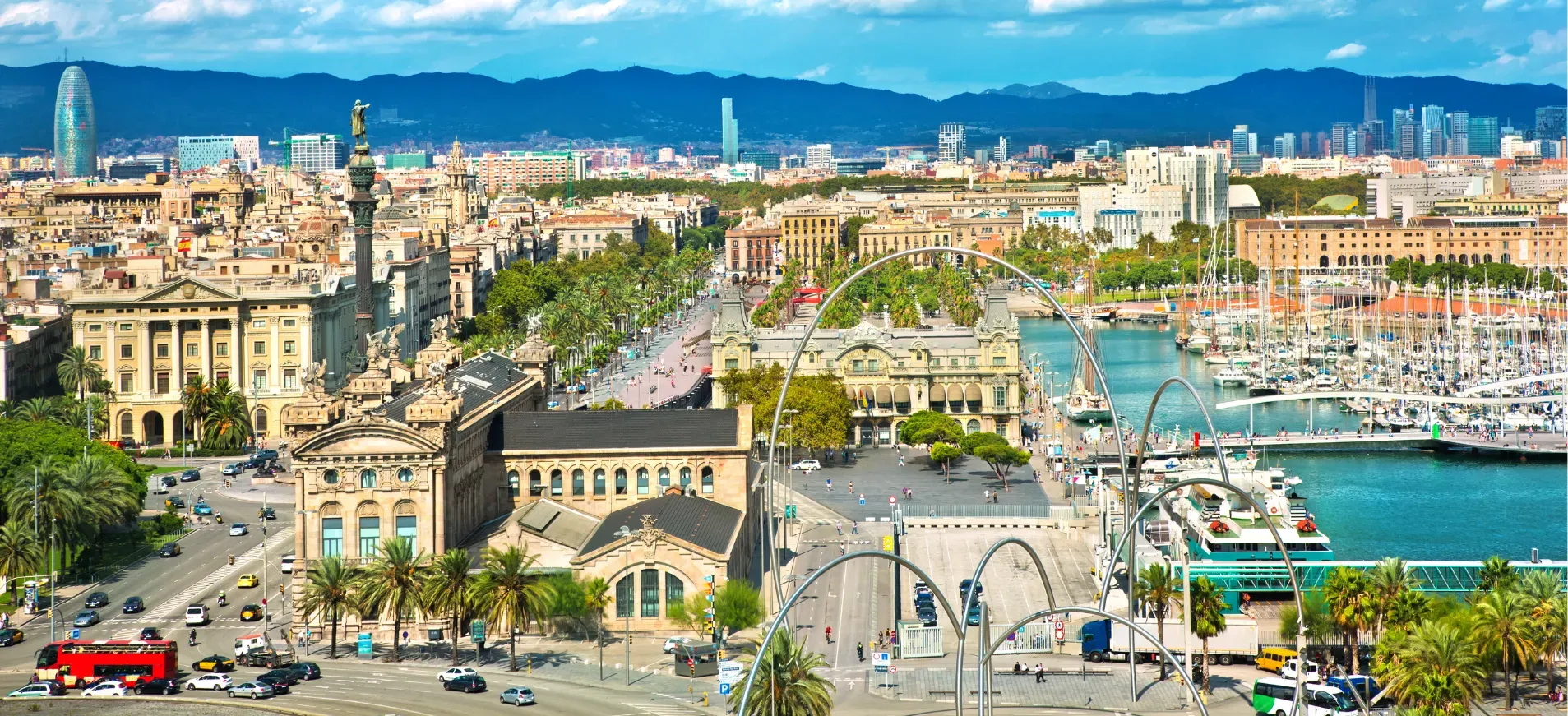
Housing
- Rents in the city average 24.0 € per m² as of September 2025. That puts a typical 50 m² one-bedroom around 1,200 € and a 70 m² two-bedroom near 1,680 €, before utilities. Central districts trend higher, with Eixample and Ciutat Vella hovering around 25 to 26 € per m² in the latest breakdown. Idealista
- Context for Spain. The national rent average is 14.5 € per m², so Barcelona sits roughly 65 percent above the country average this month. Idealista
- Tips. Tech folks often prioritize time to office hubs in 22@ or Glòries, so compare rent with commute. Curious newcomers can trim costs by looking just outside the ring roads or by considering longer leases that sometimes unlock small discounts.
Utilities and home services
- Electricity. A representative monthly electricity bill under the regulated PVPC in September 2025 was 67.61 € for a standard household. Expect seasonal swings with usage. www.ocu.org
- Natural gas. On the regulated TUR for homes with heating, the current quarterly tariff is roughly 0.043 € per kWh variable plus about 8.11 € fixed per month for RL.2 users, taxes aside. Winter months rise with consumption, but the unit price is a useful yardstick. www.ocu.org
- Water. Barcelona uses progressive tiers. Current domestic blocks start at 0.8000 € per m³ for the first 0 to 6 m³ and scale up with higher use. All-in household bills commonly work out near 3.35 € per m³ once fees and the regional water canon are included, which puts a 12 to 15 m³ household around 40 to 50 € per month as a ballpark. aiguesdebarcelona.cat
- Internet. Pure fiber is widely available. Budget offers exist, for example 1 Gbps for 20 € per month in covered areas, while mainstream 1 Gbps plans often sit around the 30 € range.
- Home insurance. A typical Spanish home policy averages roughly 120 to 265 € per year, depending on coverage and property specifics.
Transport
- Public transport. 2025 fares for 1 zone are 2.65 € for a single ticket, 12.55 € for a 10-trip T-casual, and 22.00 € for the 30-day unlimited T-usual. These are the prices most residents use when budgeting monthly mobility. TMB
- Fuel. Unleaded 95 in Spain has averaged around 1.48 € per liter in 2025, with Barcelona’s stations posting roughly 1.21 to 1.63 € depending on brand and location. For the EU-wide context, the European Commission’s Oil Bulletin tracks weekly consumer prices.
Food and daily life
- Groceries. Current shopper data puts staples roughly at milk 1 l about 1.13 €, eggs 12 pack about 3.49 €, bread for two for one day about 1.05 €, chicken breast 500 g about 4.22 €, apples 1 kg about 2.21 €. Expatistan
- Eating out. A basic lunchtime menu is around 18 €, a fast-food combo about 12 €, a neighborhood dinner for two near 45 €, and two cinema tickets about 20 €. A monthly gym runs close to 62 €. Expatistan
- Health cover. Private health insurance for adults often lands near 30 to 80 € per month for common plans in Spain, with higher premiums for no-copay or senior products. Use this as a top-up to Spain’s public system if faster specialist access matters to you.
How Barcelona compares
- Within Spain. Barcelona’s rent level is high relative to the national average, which is the single biggest driver of the city’s premium over Spain.
- Internationally. Overall living costs are about 48 percent cheaper than London and about 31 percent cheaper than Paris, while Berlin is roughly 10 percent more expensive than Barcelona and Lisbon is about the same or a touch cheaper depending on the basket. These comparisons help calibrate expectations if you are relocating from another tech hub.
Average Salaries in Tech
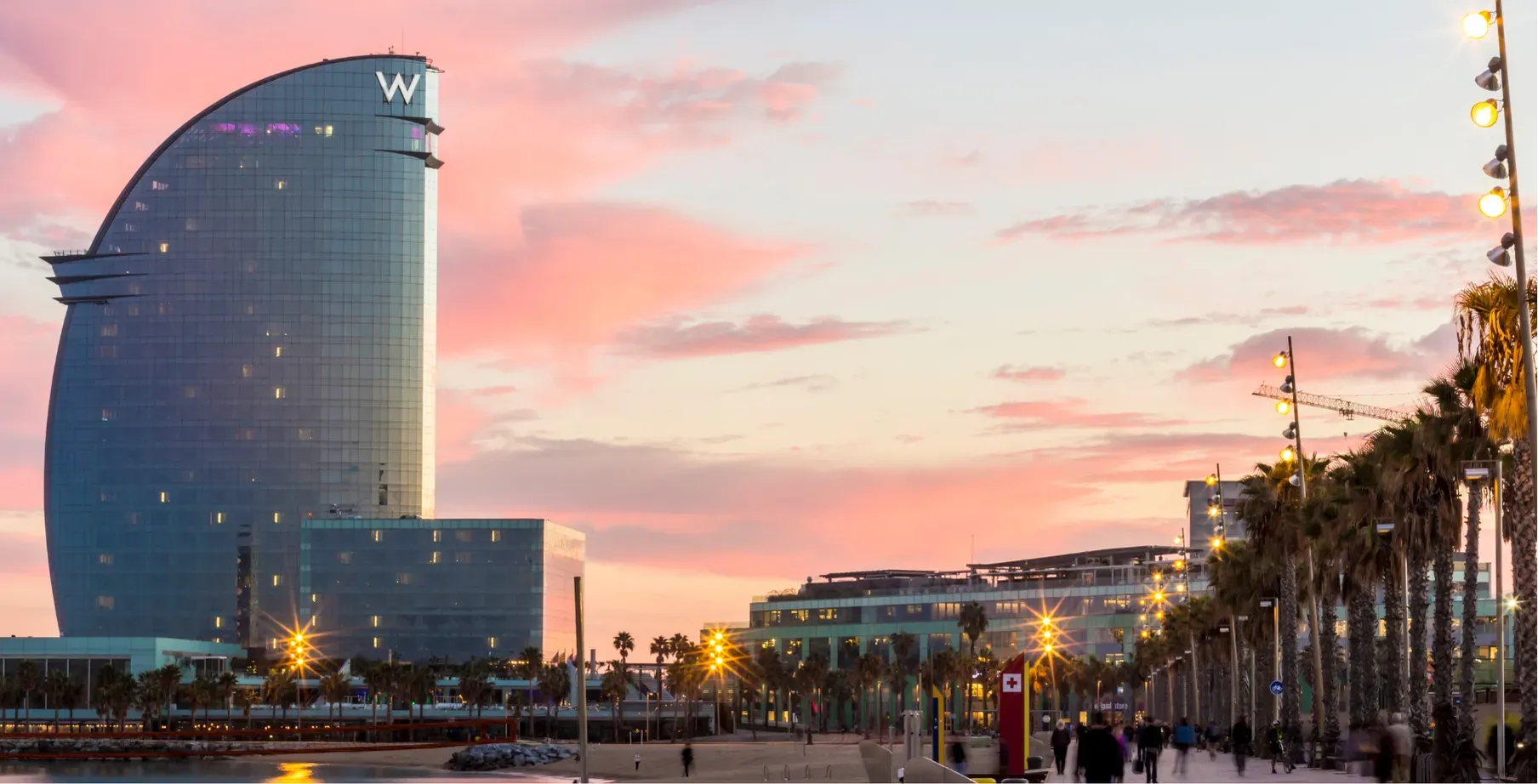
Here is a current, Barcelona-specific view of tech pay. All figures are gross annual euros and reflect typical offers seen in the city. This overview combines the city’s official ‘Digital Talent’ study with reputable compensation datasets to present both specialty averages and level-based bands.
Salary ranges by role and seniority
-
Software Engineer
Entry 45–55k | Mid 55–70k | Senior 70–90k.
Benchmarks: median total comp for Barcelona software engineers sits around 60k, with the 25th–75th percentile roughly 43k–77k. ERI data points to ~48k at entry and ~85k at senior in Barcelona.
-
Data Analyst
Entry 40–45k | Mid 45–60k | Senior 60–76k.
Barcelona median comp around 45k, with ERI showing ~43k entry and ~76k senior.
-
Data Scientist
Entry 45–55k | Mid 55–70k | Senior 70–95k.
Citywide median total comp ~64k; senior median ~78k.
-
DevOps / SRE
Entry 42–50k | Mid 50–65k | Senior 65–80k.
Barcelona SRE averages ~65k with ~46k entry; Spain-wide DevOps averages ~58k with ~40k entry and ~72k senior.
-
Cloud Engineer
Entry 45–55k | Mid 55–70k | Senior 70–85k.
Spain-wide cloud engineer averages ~63k with ~44k entry and ~79k senior; Barcelona’s cloud specialty average in the city report is ~50k (see below), with individual engineer roles often higher.
-
Product Manager
Entry 43–50k | Mid 55–70k | Senior 70–90k.
Barcelona median PM total comp ~60k, senior ~69k.
-
UX/UI Designer
Entry 32–40k | Mid 40–55k | Senior 55–70k.
City specialty average for UX/UI sits near 41k, while ERI’s Barcelona sample shows higher midpoints for experienced profiles.
-
QA / Test Engineer
Entry 32–38k | Mid 38–52k | Senior 52–65k.
ERI reports ~53k–64k for QA roles in Barcelona depending on scope.
What pays best in Barcelona’s tech scene
City tracking shows the highest specialty averages are Cybersecurity (~57.2k), Artificial Intelligence (~54.6k) and Cloud (~50k). A year later, the city’s digital observatory reconfirms the leaders and places the overall digital average at ~48.6k for 2024. If you target these fields, expect stronger offers and faster progression.
How Barcelona compares
- Versus Barcelona’s citywide salary: tech pays well above the average salary for residents of Barcelona, which was ~35.4k in 2023. The digital average is ~48.6k.
- Versus Spain overall: Spain’s average salary across all sectors was ~28,050 in 2023, so Barcelona tech typically sits far above the national mean. In ICT specifically, INE reports wage costs equivalent to high-30ks to low-40ks per year, again below many Barcelona tech roles.
- Versus other European hubs: normalized “digital professional” salaries show Zurich, Copenhagen, London and Berlin ahead, while Barcelona averages ~47.8k, placing it mid-pack among major EU cities but with a lower cost base than the top tier.
Family-Friendliness
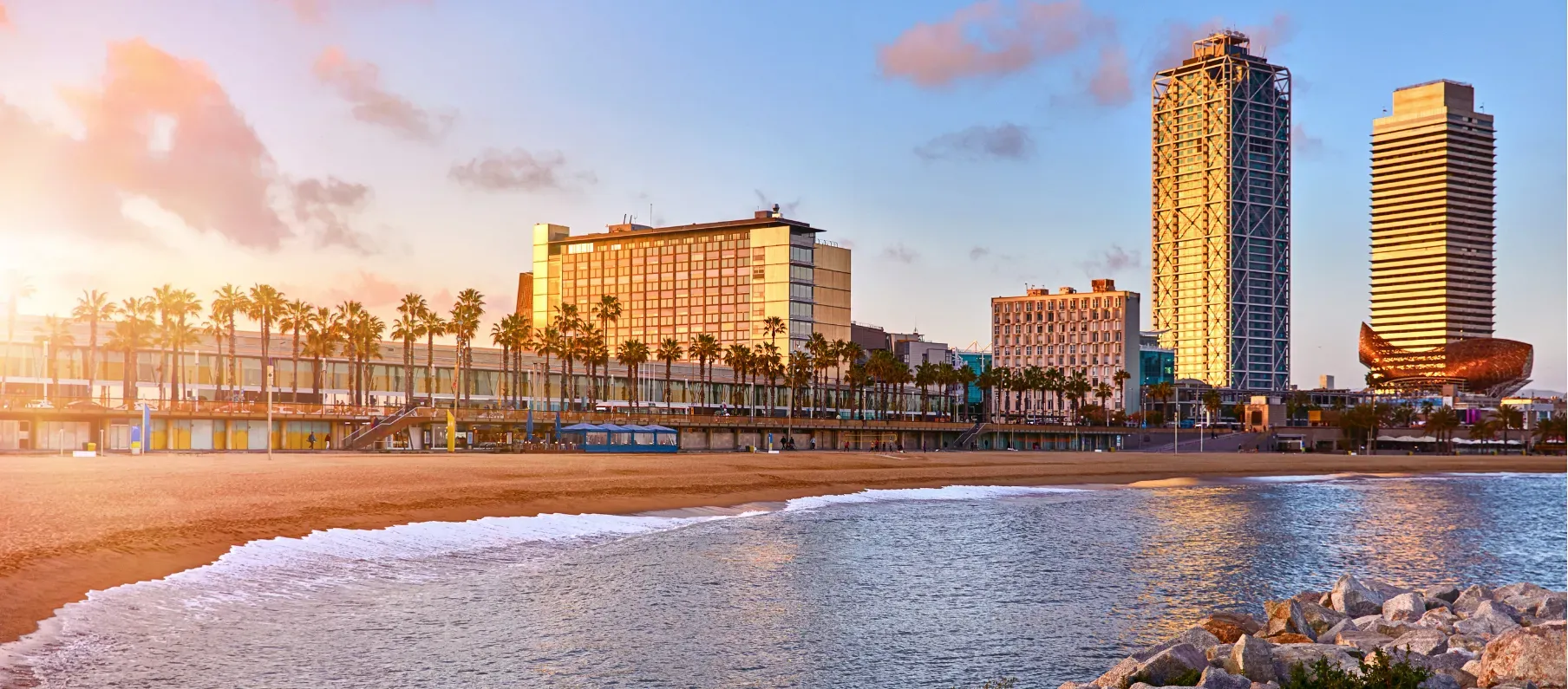
Overview of family services
Schooling options. Barcelona offers a clear public pathway and lots of choice. From 0 to 3, municipally run nursery schools known as escoles bressol operate across the city, with online pre-enrolment windows each spring and open days so you can visit classrooms and meet staff. The city’s official portal explains the calendar and how to apply step by step, and the regional education site details age and admission rules for public nurseries. Ajuntament de Barcelon
From age 3 to 16, education is universal and compulsory. The City Council’s International Welcome site walks newcomers through preregistration and enrolment for pre-primary, primary, and secondary schools, including required documents, timing, and how waiting lists work. If you prefer a private or international curriculum, Barcelona publishes an up-to-date guide to international schools so you can compare languages, diplomas, and locations. Web de Barcelona
Childcare. Demand for 0–3 places is high, so apply early during the escola bressol pre-enrolment period and use the City Council pages to check nearby schools and key dates. If you miss the main window, the municipal site explains how mid-year vacancies are handled. Ajuntament de Barcelona
Healthcare. Families access Catalonia’s public health system by requesting the Individual Healthcare Card (Targeta Sanitària Individual, TSI) and registering with a local primary care center, called a CAP. The Generalitat’s guidance shows how to apply, how to locate your CAP, and how paediatric assignment works, including the right to choose a paediatrician when available. For specialist and maternity care, Barcelona is home to leading hospitals such as SJD Barcelona Children’s Hospital and Vall d’Hebron University Hospital, which include dedicated children’s and women’s centers. Hospital Vall d'Hebron
Getting around with kids. The T-16 card gives children from 4 up to 16 unlimited free travel within their fare zone on metro, bus, tram, and suburban rail. It is loaded onto the city’s T-mobilitat smart card and requires a small issuance fee. This takes a big bite out of monthly transport costs for school runs and weekend outings. T-mobilitat
Parks, playgrounds, and green time. Barcelona maintains almost 900 children’s play areas distributed across neighborhoods, with designs focused on safety, accessibility, and social play. Park opening hours vary with daylight, and many green spaces close at dusk, so plan your late-afternoon stops accordingly. The City Council’s maps help you find nearby playgrounds and check hours before you go. Ajuntament de Barcelona
City help for families. The municipal family hub collects practical information in one place, from activities and community networks to procedures and benefits you may be entitled to as a resident family. It is a useful first bookmark when you are new in town. Web de Barcelona
Appealing features for families
- Easy beach days. All Barcelona beaches include accessibility upgrades each summer season and selected sites offer assisted bathing points, accessible showers and changing rooms, and adapted equipment. Barceloneta and Nova Icària are popular with families because facilities, lifeguards, and food options are close together. Check the City Council’s beach accessibility page for current services and timetables.
- Nature next door. The 8,000-hectare Collserola Natural Park starts at the city’s edge, so family-friendly hikes, reservoir walks, and picnic viewpoints are a quick train ride away. Official visitor pages outline routes and tips for low-effort outings with children.
- Rainy-day winners. The CosmoCaixa science museum is a hands-on favorite with planetarium shows and interactive galleries designed with families in mind. Barcelona Zoo runs year-round programs, holiday camps, and a family membership that can pay for itself in a couple of visits.
Relocation Resources
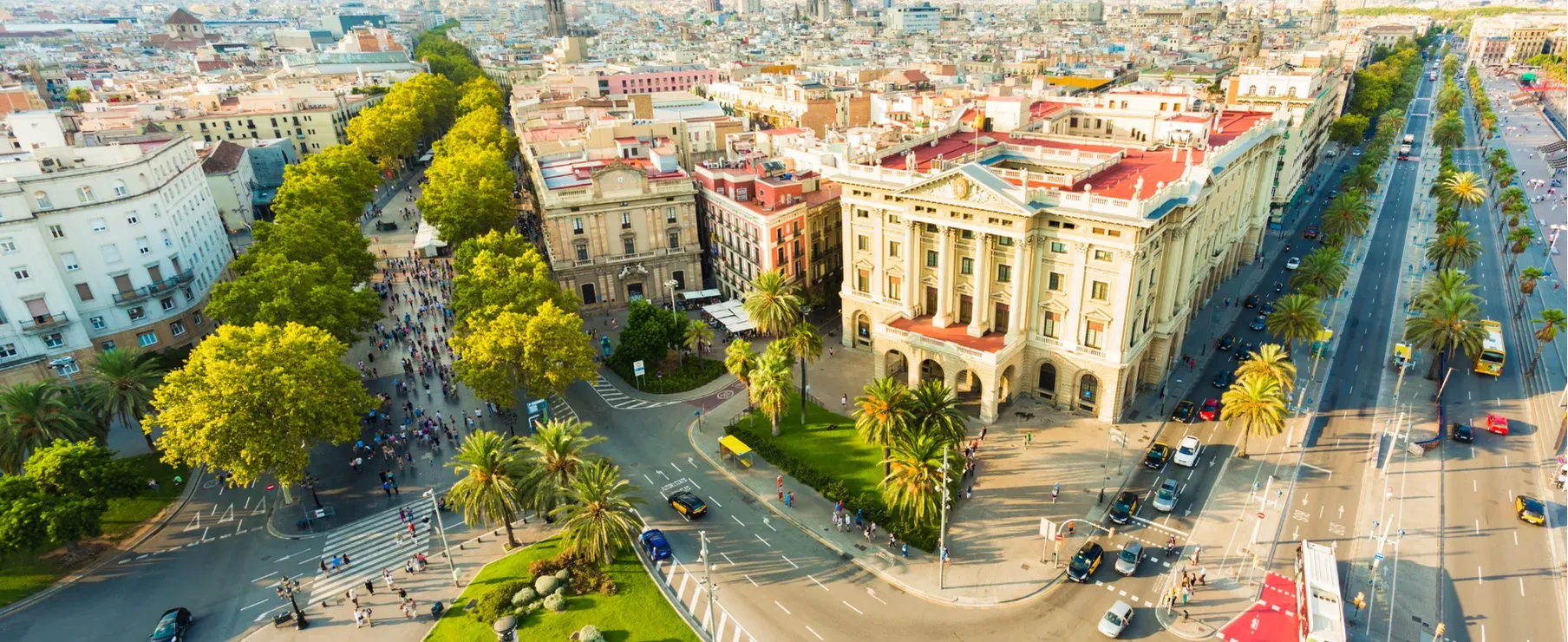
Below are reliable, Barcelona-specific resources to help you find housing, set up your home, and handle the first admin steps. I included a short note on what each one is best for.
Housing and home search
-
Barcelona City Housing Portal
The city’s official hub for everything related to housing policy, rent caps, grants, tenant advice, and how to access municipal services. Start here if you want the rules straight from City Hall. Habitatge Barcelona.
-
IMHAB, the Municipal Housing Institute
Manages the public housing stock and programs, including affordable rentals and emergency attention. Good to bookmark if you qualify for social or public rental options. IMHAB.
-
Network of Local Housing Offices
In-person help with contracts, rent aid, mediation, and tenant rights by district. You can also book appointments online. Xarxa d’Oficines de l’Habitatge.
-
Barcelona Rental Exchange, “Borsa d’Habitatge de Lloguer”
A public mediation service that matches owners and renters for below-market, long-term rentals. Useful if you are pricing sensitive and want vetted listings. Borsa d’Habitatge.
-
Social Housing Applicants Register
The route to apply for HPO/social housing in Barcelona. Check eligibility and required documents. Applicants Register.
-
Idealista
The largest rental marketplace in Spain, with extensive filters and daily alerts. Great coverage across all Barcelona districts. Idealista Barcelona rentals.
-
Fotocasa
Big portal with lots of agency stock and handy “cheap first” sorting if you are targeting a budget. Fotocasa Barcelona rentals.
-
Habitaclia
Especially strong in Catalonia, often surfacing listings you will not see elsewhere. Habitaclia Barcelona rentals.
-
Badi
If you are open to house-sharing or need a room while you get settled, Badi focuses on rooms in shared flats and co-living offers. Badi rooms in Barcelona.
-
Rent reference index and rent caps
Barcelona applies a legal rent index and caps for regular residential contracts. Read the city’s FAQ before you sign.
First admin steps and utilities
-
Barcelona International Welcome Desk
One-stop municipal service for newcomers. They advise on NIE steps, padrón registration, housing basics, schools, and more. You can book in person or online. International Welcome Desk.
-
Register on the padrón
Most landlords and schools will ask for the municipal register certificate. The city’s English guide shows how to book and what to bring. Register of residents.
-
Set up home utilities
The city explains water, gas, electricity and internet for new homes. Water supply in Barcelona city is with Aigües de Barcelona. For electricity, major providers like Endesa explain required documents and costs to activate a contract. Home utilities guide
Relocation Agencies
-
Reloc BCN
Local consultants offering tailored home search, school guidance, and settling-in support for individuals, families, and corporate moves. Good for time-pressed tech hires. Reloc Barcelona.
-
BCN Life
Personal shoppers for rentals, neighborhood orientation, school search, and paperwork assistance. Helpful if you want a single point of contact. BCN Life.
-
ERES Relocation
Spain-wide team with Barcelona coverage, useful for company-sponsored moves and multi-city transfers. ERES Relocation Services.
-
Relomar
End-to-end relocation help, from visas to home search, with partner agents in Barcelona. A fit for complex family moves. Relomar.
Quick tips to use these well
- When comparing listings, check your address against the official rent index to avoid overpaying and keep screenshots of the result with the date.
- Book the International Welcome Desk early if you need guidance on padrón, schools, or health registration so your lease and utilities start smoothly.
Job Market and Taxes
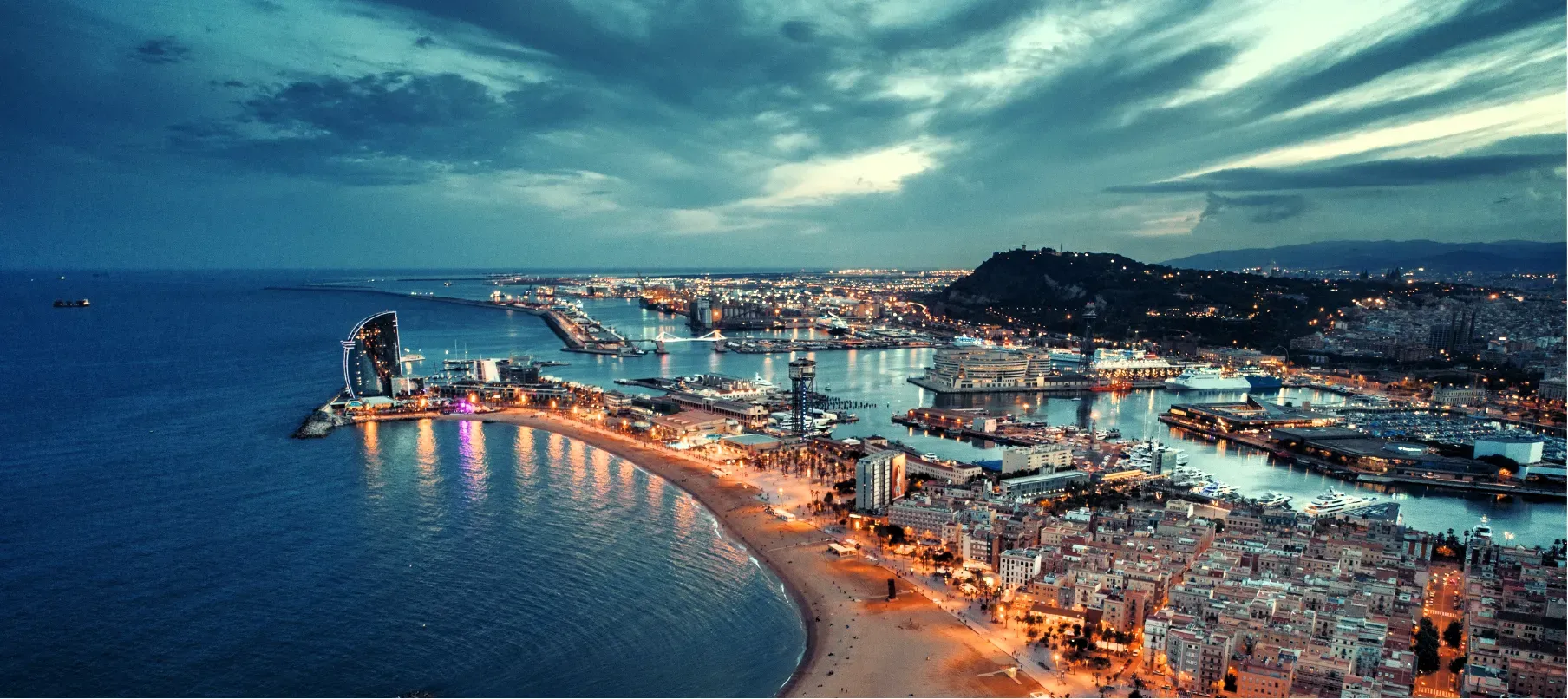
Current job openings
If you are actively looking, start here: TieTalent’s live tech roles in and around Barcelona → Jobs in Barcelona
Where the work is right now
- Product engineering, data and cloud. Barcelona’s digital workforce is close to 130,000 people and growing, with continuing demand in web and app development, AI, cloud, and cybersecurity. The city’s annual Digital Talent study highlights those specialties as both high demand and high scarcity, which usually translates into strong pipelines and competitive offers.
- Global tech hubs keep hiring. Catalonia hosts 160 international tech hubs that added more than 6,000 jobs in 2024, from software development and SRE to data science and product. That creates steady demand for English-speaking engineers alongside bilingual roles.
- Events that move the market. MWC Barcelona is more than a show. In 2024 and 2025 it generated over €500 million in local impact and thousands of part time jobs, while bringing decision makers from 200-plus countries into town. Many companies schedule hiring pushes around it.
- Why Barcelona for tech. The city consistently ranks among the EU’s top locations for foreign investment projects, which keeps new teams opening and existing hubs expanding.
Income tax overview in Spain and Catalonia
How IRPF works. Spain’s personal income tax (IRPF) is progressive. Your final rate is the sum of a state scale and a regional scale set by your autonomous community. If you live in Barcelona, you apply Catalonia’s regional scale. You pay through monthly withholdings on payroll and then reconcile in the annual return. Agència Tributària de Catalunya
Brackets at a glance. As a simple orientation, the combined general scale in Spain runs from about 19 percent on the first slice of income up to 47 percent at very high incomes, with Catalonia applying its own regional rates on top of the state half. In practice, Catalonia’s combined marginal rates span roughly 20 percent to 50 percent depending on income, according to the latest published scales. Raisin
What changed recently. Catalonia approved a reduction in the lower regional bracket for incomes below 33,000 euros, which reduces tax for many salaried residents. This update sits alongside other regional tweaks, so always check the current Catalan scale in force when you arrive. El País
Social security on top. Employees also contribute to Spain’s social security. For 2025 the employee rate is about 6.48 percent, applied between a minimum base of 1,381.20 euros and a maximum base of 4,909.50 euros per month. Above the maximum base there is a small solidarity contribution that kicks in from 2025 for very high salaries. PwC Tax Summaries
Filing calendar. The annual income tax campaign for the prior year usually runs 2 April to 30 June. Most residents file online, and the tax office offers phone and in-person help by appointment during that window. Your employer’s withholdings are reconciled when you file. Agencia Tributaria
What this means for your offer.
- Offers are quoted gross annual, often in 12 or 14 payments. Your monthly take-home depends on IRPF withholdings, your family situation, and social security.
- Catalonia allows certain regional deductions. Typical examples include partial deductions for rent if you meet the age and income conditions. Check the Catalan tax portal for the rules that apply to you. Agència Tributària de Catalunya
If you want, I can translate a target gross salary into an estimated monthly net using the current Catalonia scales and standard assumptions.
TieTalent: Where Teams Are Formed. Join for Free!